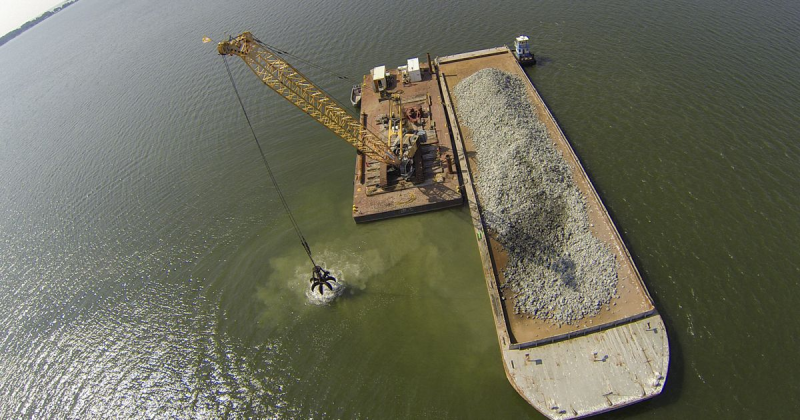Tucked between the Rappahannock River and the York River, Virginia’s Middle Peninsula is mostly off the beaten path. While the Middle Peninsula is not far to the east of the busy Interstate 95 corridor and Virginia’s capital, Richmond, it remains mostly rural. It includes thousands of acres of ecologically valuable wetlands, forests, pastures, rivers, streams, and bays.
Many families have lived in the area for generations. Other people have discovered it more recently and have built second homes there as vacation spots. Some residents still make their living by farming, forestry, or fishing. That’s thanks to a fairly healthy ecosystem, which supports life both on land and in the water. Both residents and visitors enjoy the land and water and appreciate the area’s maritime culture and history.
But as in many other areas in the Chesapeake Bay, the Middle Peninsula faces economic and environmental challenges, and the future is uncertain. It’s important that we take care of the Middle Peninsula. The area experiences frequent flooding and coastal erosion. These events can affect the local economy, which depends on a vibrant ecosystem. It’s also important to consider threats like pollution and runoff, and the effects they could have on creeks, rivers, and the Chesapeake Bay. NOAA and partners are looking for ways to keep these special places healthy.
Restoring Fish Habitat
One of the ways we are doing this is by helping to restore nearshore fish habitat. Fish, crabs, and other species use several different kinds of habitat. Sometimes they need the hiding places that oyster reefs offer. Other times they like to hang out along shorelines, sometimes in submerged aquatic grasses.
Together with partners, we are working to establish 438 acres of healthy oyster reef in the Piankatank River and 200 acres of reef in the York River. These reefs will not only provide habitat for critters, but because oysters are filter feeders, they will help remove excess nutrients from the water. Better water quality benefits fish, crabs, and humans, too!
We are also pitching in on efforts to design and build climate-resilient nearshore restoration projects. Developing solid design plans is a key step before building projects to support fish habitat and wetlands. We have funded two design projects, and our colleagues at the Chesapeake Bay Trust and the Virginia Coastal Zone Management Program have funded work, too. These projects will also reduce shoreline erosion from coastal storms. Project designs have been developed for locations including the Yorktown Naval Weapons Station and Hog Island.
The Yorktown Naval Weapons Station nearshore restoration design used the latest science on oyster restoration for fish habitat and shoreline protection. The Department of Defense recently selected it to receive implementation funding. We look forward to progress as this and other projects move into the implementation phase over the next year or so.
Supporting the Local Economy
The Middle Peninsula has higher-than-average poverty rates, and a majority of residents must commute to outside of the area for work. Businesses and homes in some areas are at risk due to increased flooding, sea level rise, and shoreline erosion.
Habitat restoration projects will enhance seafood production and help coastal communities be more resilient to the effects of climate change. They can preserve real estate value by reducing shoreline erosion, and boost tourism and recreation by protecting places people enjoy spending their spare time. All of these elements boost the financial bottom line of the Middle Peninsula.
Bringing Partners Together for a Sustainable Effort
It will take strategic partnerships to do all this work. For example, we help with the York River and Small Coastal Basins Roundtable. The Roundtable is a group managed by the Virginia–Chesapeake Bay National Estuarine Research Reserve that brings local and regional partners together. They work on topics that are important for the area: water quality, habitat, resilience, and stewardship. Our NOAA Chesapeake Bay Office created a subgroup of the Roundtable, the Habitat Restoration Steering Committee, to focus on nearshore restoration projects.
And as we have learned from our work in the Choptank Habitat Focus Area, building a strong community of partners can lead to larger-scale and more collaborative projects. These longer-term strategic partnerships will last beyond a few restoration projects to have a sustained impact.
We’re eager to roll up our sleeves and get to work protecting this wonderful part of the Chesapeake Bay and strengthening the communities who live and work here.



